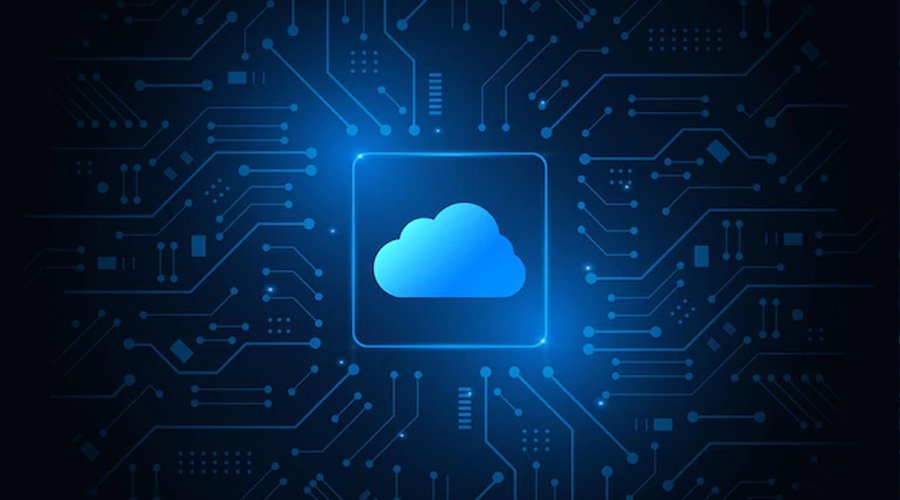Cloud security refers to the measures and practices that are implemented to protect data, applications, and infrastructure associated with cloud computing from threats and vulnerabilities. This can include securing data in transit and at rest, implementing access controls, monitoring for suspicious activity, and regularly patching and updating systems.
Cloud security is a critical concern for organizations of all sizes as more and more businesses are moving their operations to the cloud. The cloud offers many benefits such as scalability, cost-effectiveness, and flexibility, but it also poses new security risks that must be addressed. In order to secure a cloud environment, it is essential to focus on five key areas: data security, compliance, infrastructure security, identity and access management, and security monitoring and disaster recovery.
Read also: 5 Key Strategies For Securing Your Cloud Environment
5 Essential Elements of Cloud Security
- Identity and Access Management.
- Data Security
- Network and Operating System Security
- Security Compliance
- Security Monitoring and Disaster Recovery
Let’s deep dive into each element
Identity and Access Management
Identity and access management (IAM) is the process of controlling who has access to the cloud environment and what they are able to do within it. This includes implementing strong authentication methods, such as multi-factor authentication, and implementing role-based access controls to limit user permissions. The goal of IAM is to ensure that only authorized individuals are able to access the cloud environment and that they are only able to perform actions that they have been specifically authorized to perform.
One key aspect of IAM is user authentication, which is the process of verifying the identity of a user. This can include using a username and password, as well as implementing multi-factor authentication, which requires users to provide multiple forms of identification before being granted access. This can include something the user knows, like a password, something the user has, like a security token, and something the user is, like a fingerprint.
By implementing strong authentication methods, role-based access controls, user and resource provisioning, and monitoring and auditing, organizations can effectively manage access to their cloud environment and protect sensitive data and resources from unauthorized access.
Data Security
Data security is a critical component of cloud security, as organizations are entrusting sensitive information to the cloud. Data security in the cloud involves protecting data from unauthorized access, use, disclosure, disruption, modification, or destruction. This includes encryption of data in transit and at rest, as well as implementing access controls to limit who can view and edit the data.
One of the approaches to secure data is data encryption. Encrypting data at rest and in transit is an important step in protecting it from unauthorized access. Encryption uses mathematical algorithms to scramble data, making it unreadable to anyone without the correct decryption key. This can include encrypting data stored on servers and in databases, as well as data transmitted over networks.
Another approach is data backup and recovery. Regular backing up of data is essential for protecting against data loss due to equipment failure, natural disasters, or other unexpected events. This includes both on-premises and off-site backups, so that data can be quickly restored in the event of an incident.
Network and Operating System Security
Network and Operating System security are critical components of securing a cloud environment. These security measures protect the underlying infrastructure that supports cloud computing and includes securing the network, servers, and operating systems that make up the cloud environment.
Network security includes measures to protect the network infrastructure from unauthorized access and attacks. This can include implementing firewalls, intrusion detection and prevention systems, and virtual private networks (VPNs) to secure communication between network segments. Network segmentation is also a good practice to limit the attack surface, it is the process of separating different types of traffic on a network, such as separating production and development environments.
Operating System security includes measures to protect the servers and operating systems that make up the cloud environment. This can include regularly patching and updating systems, implementing access controls to limit who can access the servers, and monitoring for suspicious activity. Operating systems security also includes implementing security best practices and guidelines, such as the Center for Internet Security (CIS) or NIST, to harden the OS and prevent vulnerabilities.
By implementing strong Network and Operating System security measures, organizations can effectively protect their cloud environment from threats and vulnerabilities. This includes securing the network infrastructure, servers, and operating systems, and implementing incident response and disaster recovery plans to ensure that their cloud environment is always available and secure.
Security Compliance
Security compliance refers to ensuring that the cloud environment meets regulatory and legal requirements for data protection and privacy. Compliance is an important aspect of cloud security because organizations are responsible for protecting sensitive information and ensuring that it is used in accordance with laws and regulations.
There are several common compliance standards and regulations that organizations must adhere to, such as:
- HIPAA (Health Insurance Portability and Accountability Act) is a federal law that requires organizations in the healthcare industry to protect the privacy and security of personal health information.
- PCI-DSS (Payment Card Industry Data Security Standard) is a set of security standards that organizations that handle credit card transactions must meet to protect cardholder data.
- SOC 2 (Service Organization Control 2) is a set of security standards that organizations must meet to demonstrate that they have implemented robust controls to protect sensitive information.
- GDPR (General Data Protection Regulation) is a regulation adopted by the European Union that strengthens data protection and privacy for individuals within the EU.
- CCPA (California Consumer Privacy Act) is a state law that gives California residents the right to know what personal information businesses collect about them and how it is used.
- NYDFS (New York Department of Financial Services) is a regulation that requires financial services companies to implement robust cybersecurity programs and comply with strict data protection standards.
These are just a few examples of the compliance standards and regulations that organizations must adhere to. To comply with these standards and regulations, organizations must implement robust security controls, conduct regular security audits, and demonstrate compliance through certification or attestation.
By adhering to security compliance standards, organizations can help protect sensitive information and ensure that it is used in accordance with laws and regulations. This helps to protect the organization from potential legal and financial repercussions, as well as protect the sensitive data of the customers, employees, and partners.
Security Monitoring and Disaster Recovery
Security monitoring refers to the process of continuously monitoring the cloud environment for suspicious activity and potential security threats. This can include monitoring network traffic, logs, and system events to detect unusual activity, such as unauthorized access attempts, data exfiltration, or malware infections. Security monitoring also includes implementing security information and event management (SIEM) systems to collect and analyze log data, as well as implementing intrusion detection/prevention systems (IDS/IPS) to detect and respond to potential threats.
Disaster recovery refers to the process of developing and implementing plans and procedures to restore normal operations following a security incident or disaster. This can include regularly backing up data to ensure that it can be quickly restored in the event of an incident, as well as implementing disaster recovery plans to ensure that critical systems and applications can be quickly restored to normal operation.
One important aspect of disaster recovery is Business Continuity Planning (BCP) which refers to the process of ensuring that an organization can continue to operate following an incident or disaster. This includes identifying critical systems applications and developing plans to ensure that these systems can be quickly restored to normal operation following an incident.
Another important aspect of disaster recovery is incident response planning which refers to the process of developing and implementing plans and procedures to respond to security incidents. This includes identifying potential incident scenarios, such as data breaches or malware infections, and developing procedures to respond to these incidents. It also includes identifying key personnel who will be responsible for responding to incidents and communicating with stakeholders.
Read also: Cloud Security Services To Protect Your Web Application
By implementing security monitoring and disaster recovery measures, organizations can effectively protect their cloud environment from security incidents and disasters, and ensure that normal operations can be quickly restored following an incident.
By focusing on these five key areas, organizations can effectively secure their cloud environment and protect sensitive data and operations from threats and vulnerabilities.








